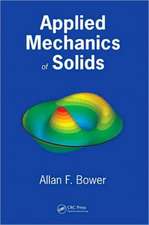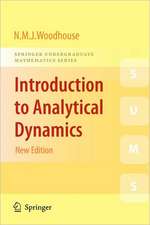Non-Destructive Testing
Autor B. Hullen Limba Engleză Paperback – 19 mar 2012
Preț: 634.00 lei
Preț vechi: 745.88 lei
-15% Nou
Puncte Express: 951
Preț estimativ în valută:
121.31€ • 127.00$ • 100.38£
121.31€ • 127.00$ • 100.38£
Carte tipărită la comandă
Livrare economică 07-21 aprilie
Preluare comenzi: 021 569.72.76
Specificații
ISBN-13: 9781468462999
ISBN-10: 1468462997
Pagini: 164
Ilustrații: 144 p.
Dimensiuni: 155 x 235 x 15 mm
Greutate: 0.24 kg
Ediția:Softcover reprint of the original 1st ed. 1988
Editura: Springer
Colecția Springer
Locul publicării:New York, NY, United States
ISBN-10: 1468462997
Pagini: 164
Ilustrații: 144 p.
Dimensiuni: 155 x 235 x 15 mm
Greutate: 0.24 kg
Ediția:Softcover reprint of the original 1st ed. 1988
Editura: Springer
Colecția Springer
Locul publicării:New York, NY, United States
Public țintă
ResearchCuprins
1 Introduction.- 1.1 Need for inspection; 1.2 Types of inspection system; 1.3 Quality of inspection; 1.4 Reliability of defect detection; 1.5 Benefits of nondestructive test examination.- 2 Liquid Penetrant Inspection.- 2.1 Introduction; 2.2 Principles of penetrant inspection; 2.3 Characteristics of a penetrant; 2.4 Water-washable system; 2.5 Post-emulsification system; 2.6 Solvent-removable system; 2.7 Surface preparation and cleaning; 2.8 Penetrant application; 2.9 Development; 2.10 Advantages and limitations; 2.11 Range of applications..- 3 Magnetic Particle Inspection.- 3.1 Introduction; 3.2 Magnetisation; 3.3 Magnetisation methods; 3.4 Continuous and residual methods; 3.5 Sensitivities; 3.6 Demagnetisation; 3.7 Magnetic particles; 3.8 Applications; 3.9 Advantages and limitations of magnetic particle inspection.- 4 Electrical Test Methods (Eddy Current Testing).- 4.1 Introduction; 4.2 Principles of eddy current inspection; 4.3 Conductivity of a material; 4.4 Magnetic properties; 4.5 Coil impedance; 4.6 Lift-off factor and edge effects; 4.7 Skin effect; 4.8 Inspection frequency; 4.9 Coil arrangements; 4.10 Inspection probes; 4.11 Types of circuit; 4.12 Reference pieces; 4.13 Phase analysis; 4.14 Display methods; 4.15 Typical applications of eddy current techniques.- 5 Ultrasonic Testing.- 5.1 Introduction; 5.2 Nature of sound; 5.3 Wave velocity; 5.4 Wavelength; 5.5 Generation of ultrasound; 5.6 Characteristics of an ultrasonic beam; 5.7 Sound waves at interfaces; 5.8 Sound attenuation; 5.9 Display systems; 5.10 Probe construction; 5.11 Type of display; 5.12 Inspection techniques; 5.13 Identification of defects; 5.14 Immersion testing; 5.15 Sensitivity and calibration; 5.16 Reference standards; 5.17 Surface condition; 5.18 Some applications of ultrasonic testing.- 6 Radiography.- 6.1 Introduction; 6.2 Uses of radiography; 6.3 Some limitations of radiography; 6.4 Principles of radiography; 6.5 Radiation sources; 6.6 Production of X-rays; 6.7 X-ray spectra; 6.8 ?-radiation sources; 6.9 Attenuation of radiation; 6.10 Radiographic equivalence; 6.11 Shadow formation, enlargement and distortion; 6.12 Radiographic film and paper; 6.13 Xeroradiography; 6.14 Fluoroscopy; 6.15 Exposure factors; 6.16 Radiographic screens; 6.17 Identification markers and Image Quality Indicators; 6.18 Inspection of simple shapes; 6.19 Inspection of complex shapes; 6.20 Viewing and interpretation of radiographs; 6.21 The radiation hazard; 6.22 Protection against radiation; 6.23 Measurement of radiation received by personnel.- 7 Other Non-destructive Inspection Techniques.- 7.1 Optical inspection probes; 7.2 Neutron radiography; 7.3 Laser-induced ultrasonics; 7.4 Time-of-flight diffractions; 7.5 Acoustic emission inspection; 7.6 Crack depth gauges; 7.7 Thermography; 7.8 Surface texture analysis; 7.9 Multi-phase flow analysis; 7.10 Conclusions.








